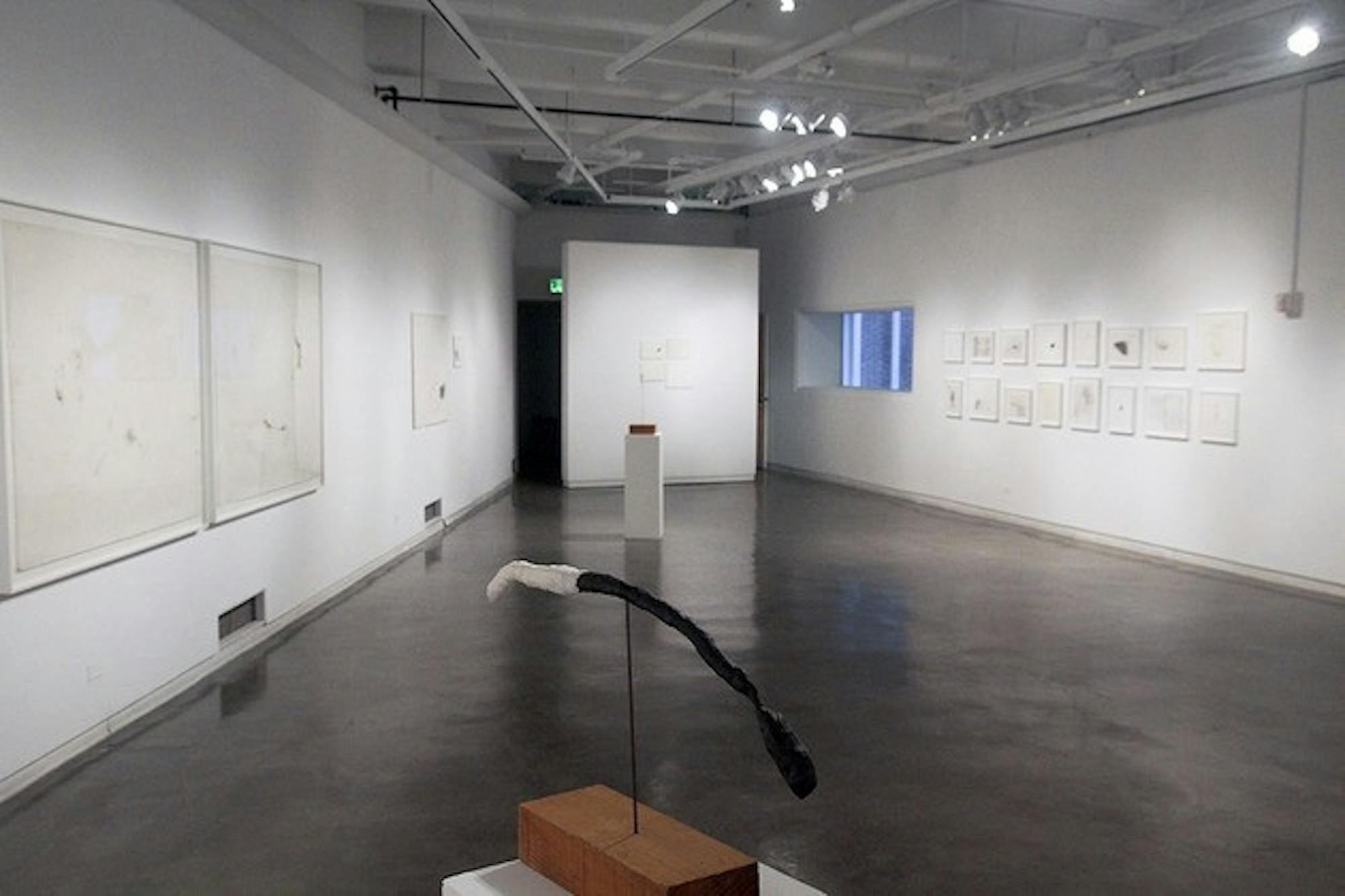Her interest in the exhibit was driven by a desire to see the full breadth of the time span in which she has been an artist, according to Matalon. Viewing art as an ongoing process, Matalon said she believes that even if something was started in 1980, it can still be finished 20 years later a philosophy that accounts for both the conceptual and aesthetic unity of her work.
Matalon's installation has transformed the Jaffe-Friede Gallery, normally just a white-walled room, into a refined space filled with muted tones. The art does not passively hang in the oblong sliver of a room but engages dynamically with its space and architecture.
Matalon prefers to avoid classification based on one particular medium but concedes that there are times when she gravitates toward certain materials over others. Her drawings, for instance, consist of wax and graphite layered atop specially treated paper. The neutral colors are a function of the materials she uses, but they are not her primary concern. Her delicate, anthropomorphic graphite forms, sealed with a layer of matte wax, yield a pleasing tonal contrast that read even from a distance.
Like her drawings, her sculptures are achromatic and convey a comparable sense of tranquil solemnity. In addition to the materials used in her drawings, Matalon also incorporates wood, gauze and wire into her three-dimensional pieces. Carefully crafted and delicately textured, her sculptures are aesthetically similar to her works on paper, and every piece cooperates to assert a palpable physical presence. Matalon often works on many pieces at once, all of which are borne of an irresistible need to create.
Matalon said her creative drive comes from within. She is a natural artist, who never consciously decided to pursue a career in the arts, she said, though her path has been difficult at times. Certain personal and social incidents have challenged her productivity, but she said she has focused on persevering because her art is her work.
Studio art intern Malia Reeves '12 helped install the show and was able to speak with Matalon about her art.
"She's an incredibly passionate person, and her work stems a lot from this passion," Reeves said. "It's really heavy. It's so complex it's overwhelming."
For the viewer unfamiliar with abstraction, her art can be difficult to digest, Reeves said. Lacking representative elements or a clear narrative, her art demands the viewer's thoughtful engagement. Matalon expects, even embraces, this incomprehensibility. Not everyone will understand her art right away, and still others will not realize that they do, she said, noting that she has had people tell her that they are still pondering her art four days after viewing it.
Studio art professor and director of the artist-in-residence program Gerald Auten acknowledged the "slowness" of Matalon's work.
"Every square inch of her paper is considered," he said. "She decides whether to use her accidents. Everything is meticulously attended to."
Auten characterized Dartmouth's artist-in-residence program as exceptional relative to those at other institutions, where visiting artists are typically expected to teach. At Dartmouth the resident artist is immersed in a community that genuinely appreciates the arts, he said. Students from a variety of disciplines find relevance and enjoyment in the artist-in-residence program, and Auten said that Hanover community members are equally as engaged. A collector in the Upper Valley has already contacted Matalon to express interest in her work.
Matalon currently has her own sunlit studio in the Black Family Visual Arts Center and the freedom to create as she pleases. She has already made use of Baker Library and the Hood Museum of Art and said she looks forward to learning how to weld. Matalon said she is excited to utilize these and other resources that she lacks in her Brooklyn studio.
She is also hoping to construct a bench for the installation, a tradition she started many years ago and tries to honor with every new show.




